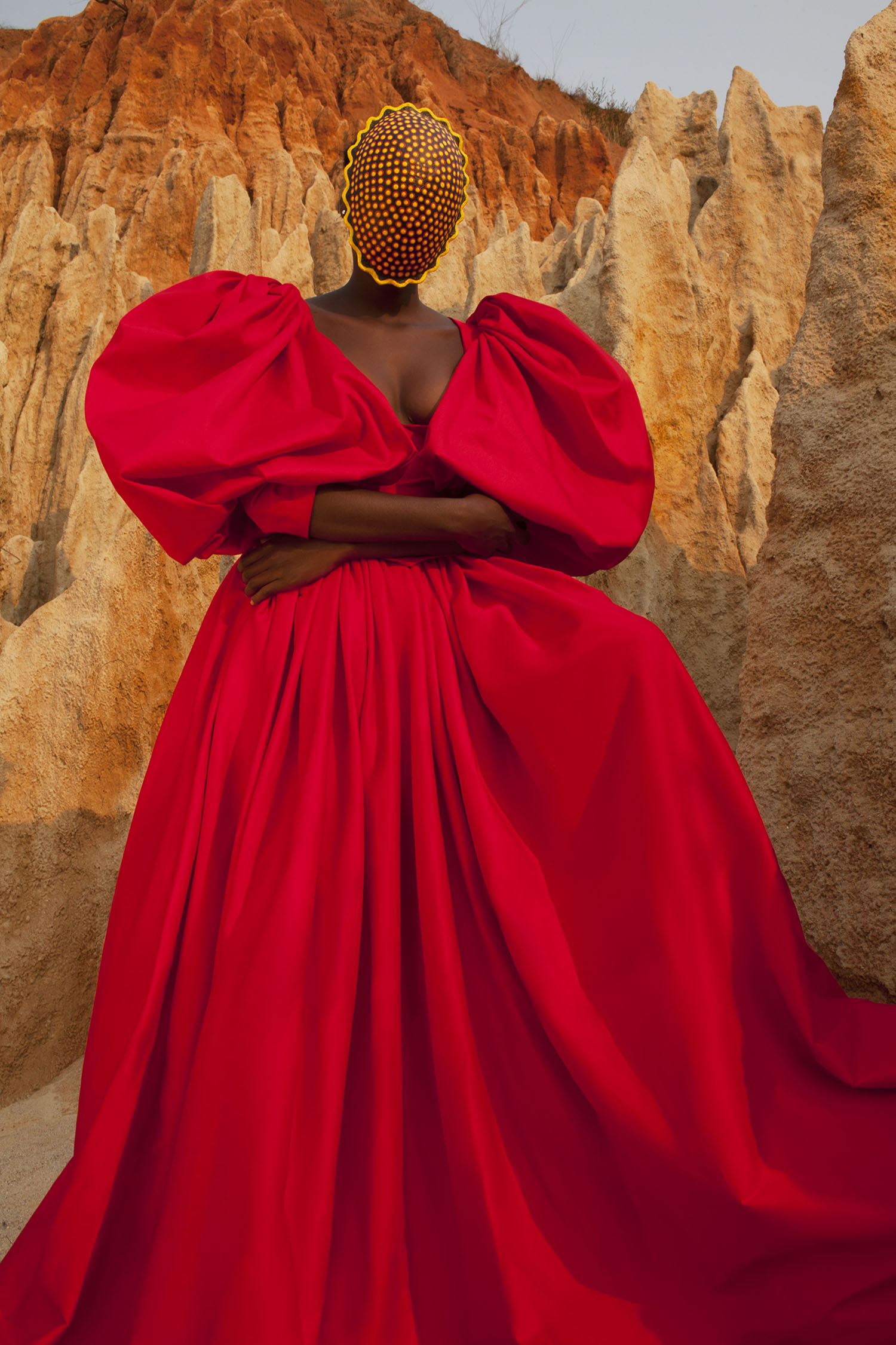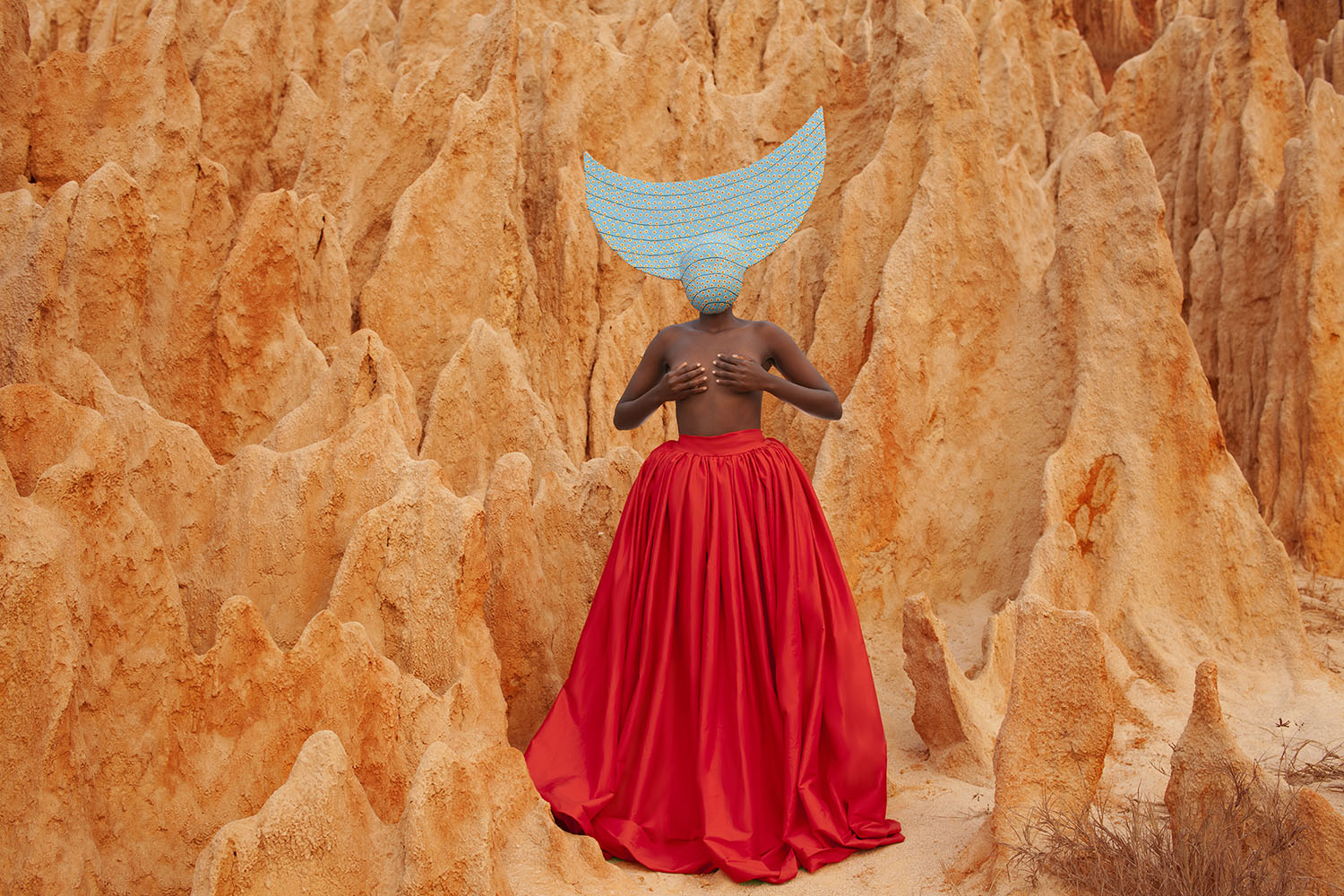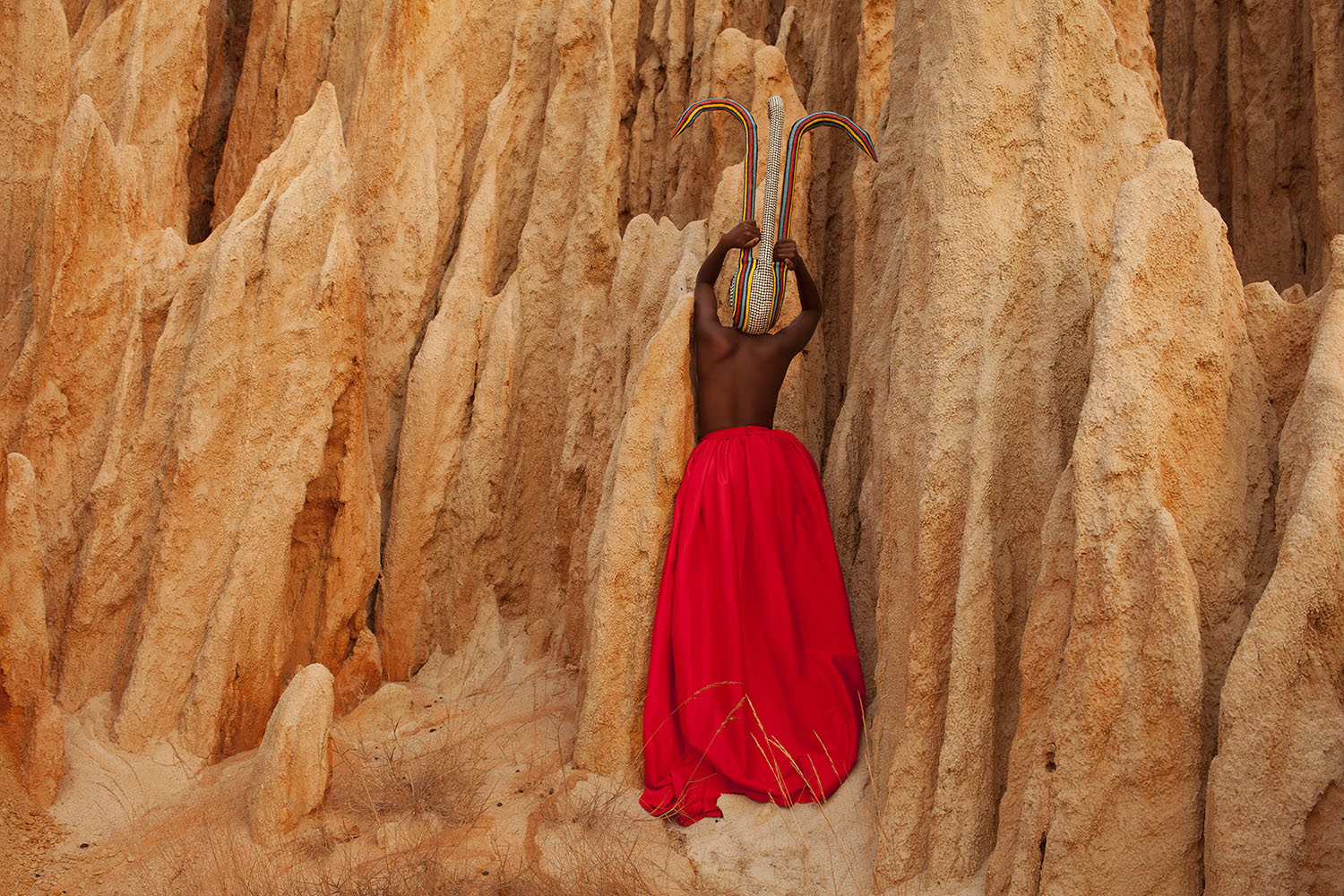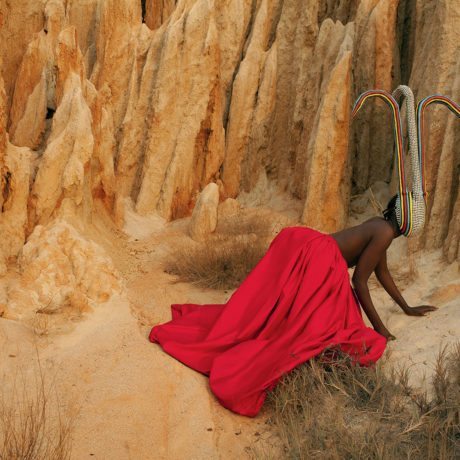
Can you tell me about the new series, Fortia, you’re presenting at Lagos Photo this month, which focusses on how we portray disability in art and visual culture?
Fortia means “strength” in English; the idea to explore disability in the arts was first of all a personal interest in using art as my therapy, for me to understand my father’s death as a man who had both legs amputated. For many years I had a misunderstanding of disability and the images I connected with it. Most of us fail to visualize empowering images of life after physical disability. I wanted to create images that were not obvious and that would not give the viewer the pleasure of being right about their assumptions.
Shot in Luanda, Angola in 2017, Fortia is my latest photography series portraying how I view disability. The female character carries this story in all masks, as each mask has a title and portrays a certain moment in my life, alluded to in titles such as: My Mother’s Womb, This is Not His Funeral, This is Life!, Sailing Back to Africa as a Dutch Woman and Womanhood – Sex, Love and Betrayal. The masks are handmade and behind the masks I hide a ritual that includes the participation of a group of physically disabled men.
To sketch my emotions and to later design the work with men that reminded me of my father’s situation opened the opportunity for honest conversations about the body and the political and social inclusion in our society. To exhibit for the first time in South Africa was a major experience for me. Fortia was exhibited together with the masks and had a text explaining the emotion behind the artwork. I would like to thank my gallerists Janire Bilbao and Lauren Pereira from the Mov’art Gallery in Luanda, Angola for this invitation, their approach as a young gallery showed respect and dedication, to share a story, a new idea, an honest emotion and I think we succeeded in creating this dialogue with the visitors.
“I missed a father figure to protect me as a young woman. The older I get, the more I understand how this affected the relationship I have with my body.”
How have your own experiences growing up with a disabled father affected you, and how do you view disability and your own able, female body?
Fortia helped me understand how physical disability affected me since I was a little girl. My father developed a sickness when I was a teenager, which left him disabled. I was not educated enough to understand that there is normal life with or after a physical disability. I wanted my father to continue to exist as an independent great man, his disability felt like the end of the existence of my father as a strong man. The lack of empowerment affected me because I could not understand how a body would function without legs, it was ingenuine but a very honest feeling. My father never failed to educate me through hope and strength, it showed he was still a man of worth. This made it so much easier for me to let go of sadness and sorrow. His ability to continue to financially and emotionally be our father was what made me realize that all images and emotions I connected with his sickness were wrong. This was not the end of him as a man, as the chief of the family and as my father. The more I understood the less I felt sad to see the process he had to go through. After his death, to grow up without a father was a very dark period in my life that took me years to understand. Not having a father left me somehow emotionally disabled. I did not know how to protect myself emotionally and physically and also how to react to pain and abusive relationships. I missed a father figure to protect me as a young woman. The older I get, the more I understand how this affected the relationship I have with my body. Art permits me to freely manifest the majesty of the female body.

Some of your past work deals with taboo subjects around the physical body, such as female pleasure and genital mutilation—what do you hope you can communicate through your work about these subjects?
Freedom, the freedom to do with our body what we think is right and what we think is part of our identity without being misunderstood as women. Through my work I try to understand the system that makes the female body dependant on the male, religion and culture. It is important to try and succeed to take control of our body. My art exists to exhibit the resistance of those who want to be free and not depicted as a property or an object of lust. I try to manifest women in this body of work. As an artist the consumption of inequality and discomfort is a crucial point in the development of these images. Using art as a communication tool has helped to speak about a lot of things that I could not express verbally. If some of my works cannot be exhibited in certain countries it’s because these images upset viewers who might not share the same principals as me when I celebrate the female body. As an artist this is all I can give, images to tell stories that connect us, to later disconnect us, as a result of our beliefs.
“I take a risk in creating images that are often not following my society’s ideal.”
Can you tell me a bit more about the relationship you have with feminism, with feminist art, and how it’s understood at the moment in Luanda?
I am just a woman, listening to my own ideals about what it means to be a woman. I explore topics that connect me to feminism. As an artist, I contribute with my art to the debate about feminism and I hope soon we will achieve a better understanding of how it feels to be a woman in Angola and to take control of our social, political agendas. My aim is to re-educate men who were educated to not respect women and to use their physical strength, political and social position to intimidate women and emotionally abuse. I aim to show what it means to be an Angolan fearless female artist and to go through life as a woman in a society that too often empowers boys to weigh their value on their position to dictate what happens to the female body. I take a risk in creating images that are often not following my society’s ideal but somehow I became fearless as I feel part of a movement of fearless women fighting for equality.

Are there any pitfalls and problems in working with aesthetic images, especially when a lot of your photographs are viewed without any context about the research and stories that go into them?
I don’t see it as a problem to be misunderstood. All these images shared on social media made some of us too lazy to intensively interact with images. The interaction has no debt and most viewers are looking for images that meet their taste or the definition of taste that they created in their mind. Sometimes it is difficult to understand that not every work will have the same impact, therefore what is important in this process is that art gives the viewer the freedom to decide what interaction they create with my work. Exhibitions have been essential for me because the physical presence is an opportunity for the viewer to experience the emotions and thoughts provoked by the image.
Keyezua shows at this week’s Lagos Photo Festival






